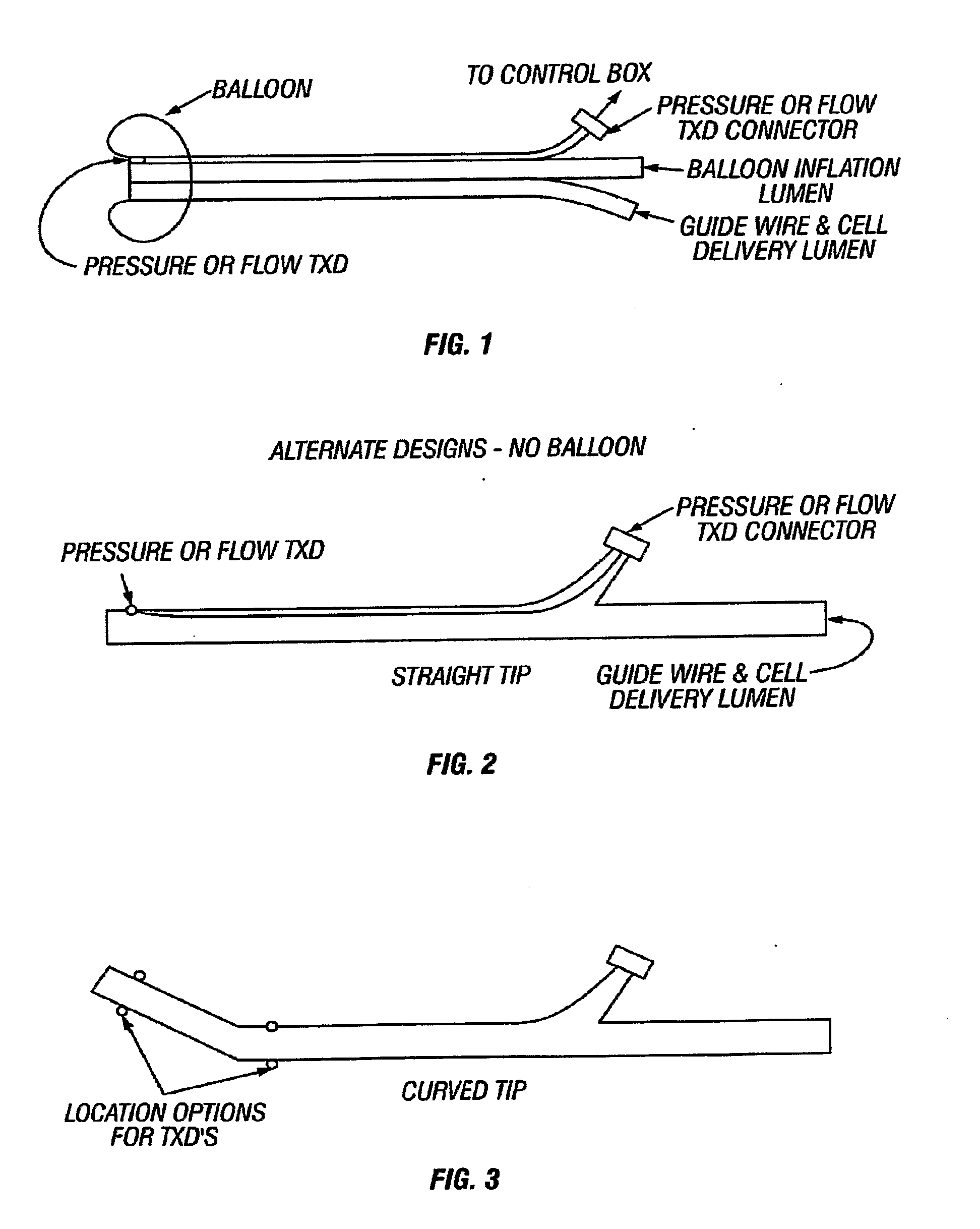Cell delivery catheters with distal tip high fidelity sensors
a cell delivery and high-fidelity technology, applied in balloon catheters, surgery, other medical devices, etc., can solve the problems of loss of blood flow and further compromise organ function, and achieve accurate determination, reduce flow rate, and compromise organ function
- Summary
- Abstract
- Description
- Claims
- Application Information
AI Technical Summary
Benefits of technology
Problems solved by technology
Method used
Image
Examples
example i
Effect of Cell Infusion on TIMI Grades with and without Balloon Occlusion
[0049]The effect of cell infusion on blood flow rate, as evaluated by TIMI grading, was evaluated. Cells were either infused during balloon occlusion or without balloon occlusion, and TIMI flow grading was used to measure and score blood flow at timepoints before, during and following the infusion.
[0050]The adipose-tissue derived cells (ADCs), prepared as described, e.g., in U. S. Pat. App. No. 20050084961, entitled “Systems and methods for separating and concentrating regenerative cells from tissue,” were administered by intracoronary infusion to a pig model of acute myocardial infarction (AMI).
[0051]For the balloon down infusion, an AMI was induced in nine animals by balloon occlusion using an angioplasty balloon and inflating it in the mid-LAD, for 3 hours. An ADC suspension with a concentration of 2.5×106 cells / ml and a flow rate of approximately 1 ml / min was infused in boluses of 3 ml at the site of former...
example ii
Intracoronary Delivery of Cells to a Patient using a Catheter having a Flow Wire Sensor
[0054]An flow rate sensor infusion catheter of the invention (e.g., as shown in FIG. 5) is placed through a guiding catheter into the coronary artery over a guidewire. Positioning can be verified using angiography since the tip of the catheter has radio opaque markers. Blood flow in the coronary vessel is measured using the catheter's flow sensor. In addition, vasoactive agents known and used in the art, e.g., adenosine, are administered into the coronary artery to induce maximal vasodilatation, allowing measurement of maximum possible blood flow or average peak velocity without interference of vasoconstriction on an arteriolar of capillary level that would otherwise affect the measurement. Infusion of the cells is then started, while blood flow is continuously monitored. At sufficient intervals, the infusion is halted and the administration of the vasodilating agent is repeated to measure the max...
example iii
Intracoronary Delivery of Cells using a Catheter having a Flow Rate Sensor
[0055]The infusion catheter is placed through a guiding catheter into the coronary artery over a guidewire. Proper positioning can be verified using angiography since the tip of the catheter has radio opaque markers. Blood flow in the coronary vessel is automatically measured using the flow sensor. A control box continuously monitors the flow rate in the coronary artery while the cell infusion is started. The rate of infusion through the catheter is kept constant. The infusion is stopped automatically before a critical reduction in coronary blood flow is reached. Additionally, any sudden drop in coronary blood flow will cause infusion to cease and an alarm to be activated.
PUM
 Login to View More
Login to View More Abstract
Description
Claims
Application Information
 Login to View More
Login to View More - R&D
- Intellectual Property
- Life Sciences
- Materials
- Tech Scout
- Unparalleled Data Quality
- Higher Quality Content
- 60% Fewer Hallucinations
Browse by: Latest US Patents, China's latest patents, Technical Efficacy Thesaurus, Application Domain, Technology Topic, Popular Technical Reports.
© 2025 PatSnap. All rights reserved.Legal|Privacy policy|Modern Slavery Act Transparency Statement|Sitemap|About US| Contact US: help@patsnap.com



